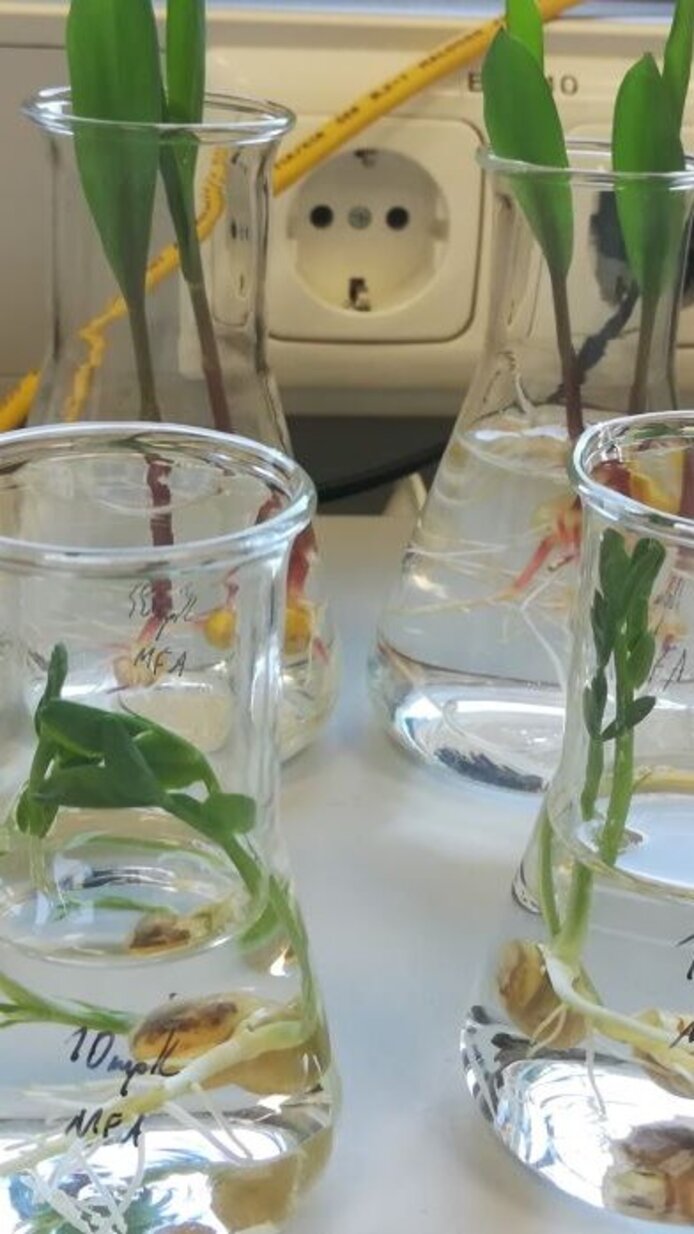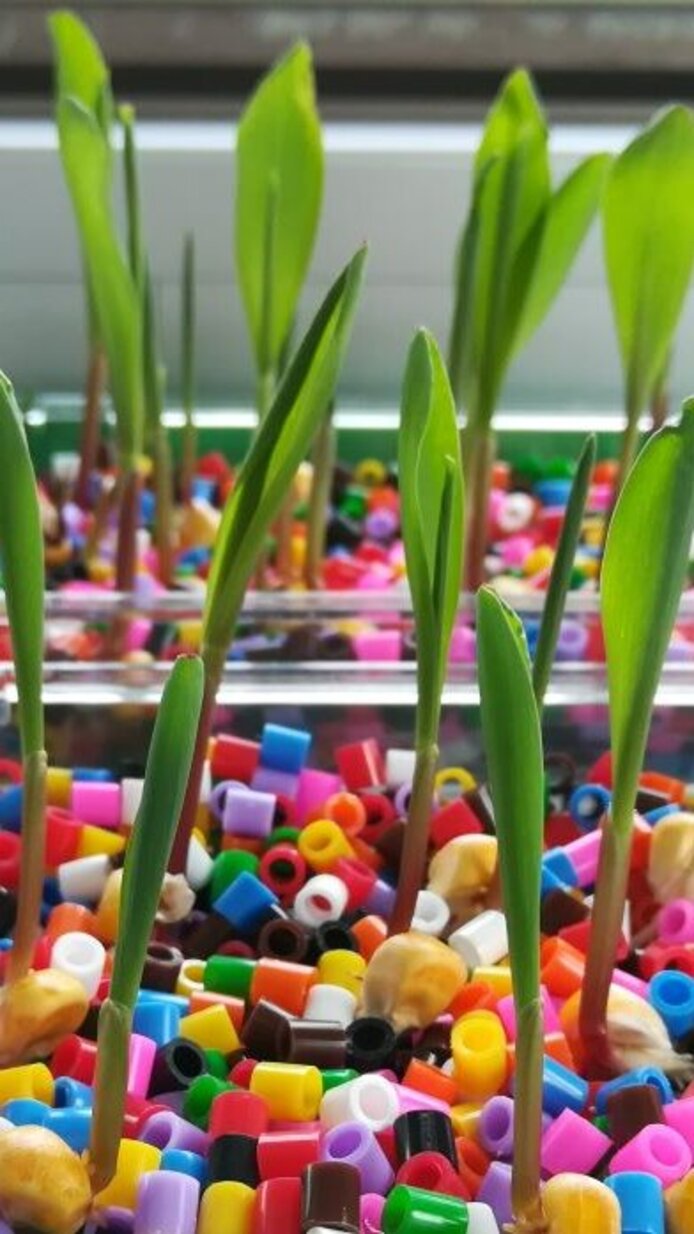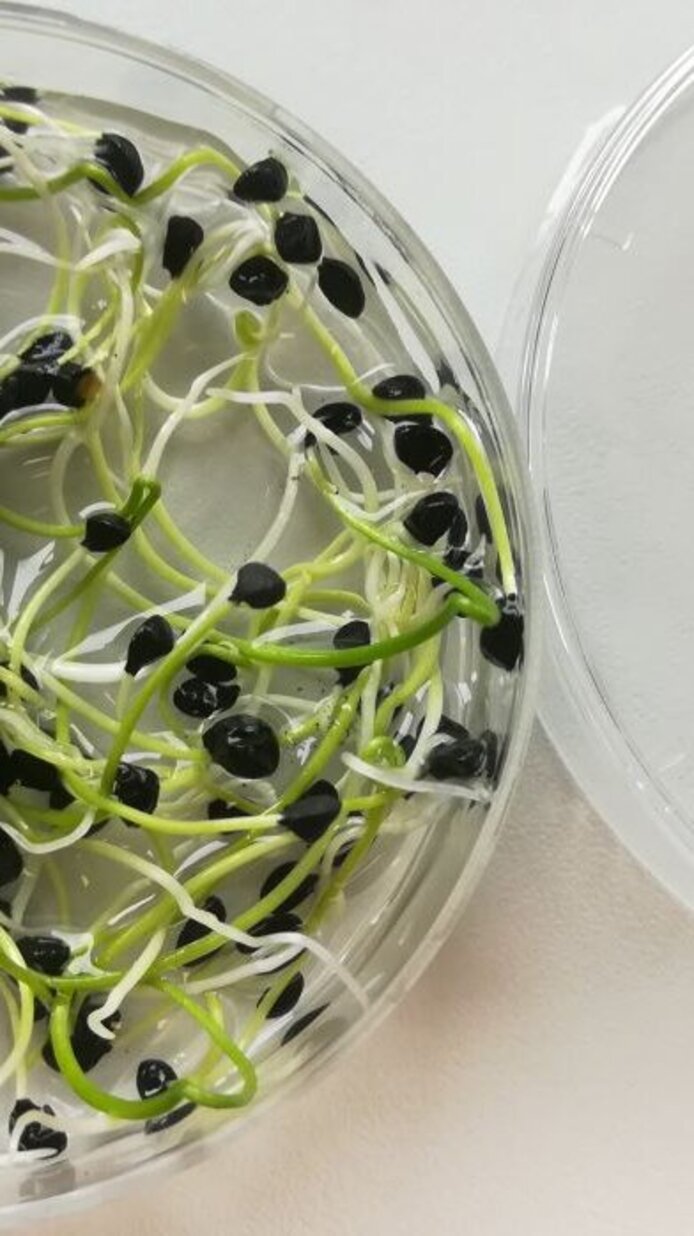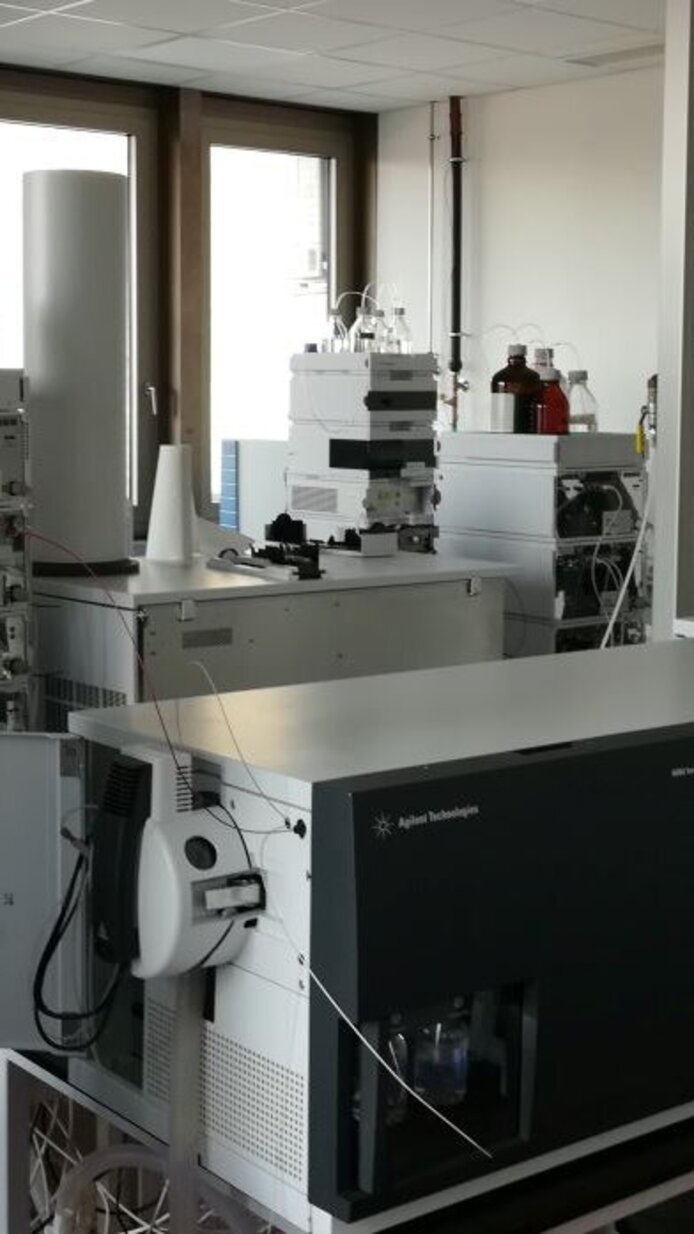How does the beta blocker get into the garden cress?
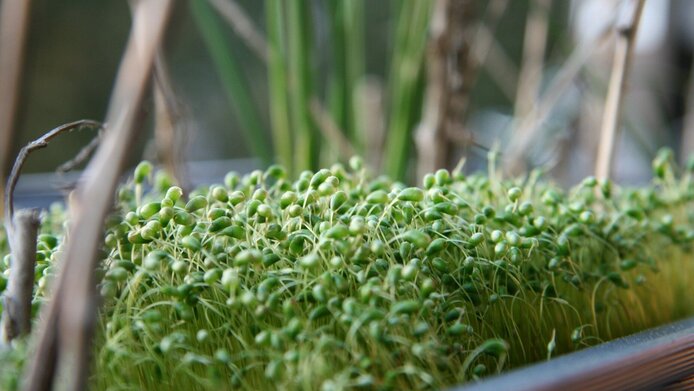
There is a common principle that is true not only in environmental analysis: finding something is easier if you know what you are looking for. Even decades ago, various classes of pharmaceuticals whose chemical structures are known were detected in the effluent from sewage treatment plants. The fact that “you find half a pharmacy there, if only in traces” was obvious to Wolfgang Buchberger, an analytical chemist at the University of Linz. It was not at all clear, however, what happens in plants if they are watered with treated wastewater. While not yet common in Austria, this could become an issue as a consequence of climate change. In arid Israel it is already common practice, and large vegetable producers like Italy and Spain also struggle with water shortages to some extent. So what happens when plants are confronted with traces of medicinal products in irrigation water? Will they absorb any active ingredients at all? And if they do, how are these distributed in the plant tissue? Will the plants accumulate, metabolise or degrade them? And could active pharmaceutical ingredients have an impact on plant growth?
Painkillers and plant growth
For the analysis of cress, maize, radishes, peas and onions, Buchberger started a cross-border collaboration with Masaryk University in Brno with financial support from the Austrian Science Fund FWF. Masaryk University contributed its greenhouses and know-how on regular plant growth to the project. Wolfgang Buchberger and his team first tackled the substance class of which the largest quantities were found in treated wastewater: non-steroidal anti-inflammatory drugs such as acetylsalicylic acid, diclofenac or ibuprofen. “When it comes to antipyretic, analgesic and anti-inflammatory agents, we detect such small quantities overall in the effluent from wastewater treatment plants that no threshold values have yet been specified,” is the reassuring result that Buchberger reports. In the greenhouse, the researchers cultivated their model plants with significantly higher concentrations in the water in order to be able to observe effects on growth – and then gradually diluted them. The most important finding: at low concentrations, growth is not affected, so there is no acute danger.
What, where, how much and in what form?
Speaking of growth: the model plants represent different types of metabolism and growth. Starting with the root area, the researchers determined how much of the original active ingredient and its degradation products and metabolites are found in what parts of the plant, since different parts of the plants are consumed. While the original active ingredient is known and can therefore be detected, the entire range of metabolites, which can also differ between plant species, first had to be identified in the extracts – and at low concentrations, at that. For this purpose, the researchers analysed the extracted substances using mass spectrometry and chromatography and then determined their chemical structure. “If we don't know what the substance is and what it looks like, we can't say anything about how it will react. This was the basis on which we had to build up the entire analytical methodology and methods of identification,” says Wolfgang Buchberger, describing a mammoth task in the context of this basic research project. In addition, the researchers screened other classes of substances such as drugs that reduce blood pressure and blood lipid levels, or antibiotics, in order to find out whether plants metabolise or degrade them – or not.
Tracing the journey step by step
For now, Wolfgang Buchberger gives us a reassuring report: for the time being we don't have to be afraid of contaminated vegetables. But what are the things we ought to keep monitoring? When intact antibiotics are found in the sewage plant effluent, they are not efficiently degraded either by the organism or in the sewage plant. This applies to some fluoroquinolones, for example. “This type of antibiotic is accumulated in the plant without being changed. Diclofenac, on the other hand, is well degraded in the human organism. The fact that we still find it intact in the effluent can probably be explained by its application as an ointment that is then washed off,” says Buchberger, and he adds: “It is also undergoes further conversion in the plant into a number of metabolites.”
With this basic research project, the researchers from Austria and the Czech Republic have made an important contribution to our understanding of the spreading of synthetic substances in the environment. Now that numerous methods have been developed for environmental analysis, it will be possible to check plants for traces of drugs and metabolites. As a next step, it would be rewarding for toxicology experts to take these results as a basis for the continued improvement of wastewater treatment plant technologies.
Personal details
Wolfgang Buchberger studied chemistry in Vienna and Linz. In 1996, Buchberger was appointed full professor of analytical chemistry at the Johannes Kepler University in Linz. Between 1990 and 2015 he spent several research spells in Australia. His research interests include organic trace analysis, environmental analysis, quality control of materials, analytical high-performance separation techniques and their combination with mass spectrometry. The international project “Drugs in the environment and interaction with plants” (2017-2020) was funded by the Austrian Science Fund FWF with 167,000 euros.
Publications
Franz Mlynek, Markus Himmelsbach, Wolfgang Buchberger, Christian W. Klampfl: A fast‐screening approach for the tentative identification of drug‐related metabolites from three non‐steroidal anti‐inflammatory drugs in hydroponically grown edible plants by HPLC‐drift‐tube‐ion‐mobility quadrupole time‐of‐flight mass spectrometry, in: Electrophoresis 2021
Franz Mlynek, Markus Himmelsbach, Wolfgang Buchberger, Christian W. Klampfl: A new analytical workflow using HPLC with drift-tube ion-mobility quadrupole time-of-flight/mass spectrometry for the detection of drug-related metabolites in plants, in: Analytical & Bioanalytical Chemistry 2020
Franz Mlynek, Markus Himmelsbach, Wolfgang Buchberger, Christian W. Klampfl: Time study on the uptake of four different beta-blockers in garden cress (Lepidium sativum) as a model plant, in: Environmental Science & Pollution Research 2020
Bernd Reichl, Markus Himmelsbach, Lisa Emhofer, Christian W. Klampfl, Wolfgang Buchberger: Uptake and metabolism of the antidepressants sertraline, clomipramine, and trazodone in a garden cress (Lepidium sativum) model, in: Electrophoresis 2018
